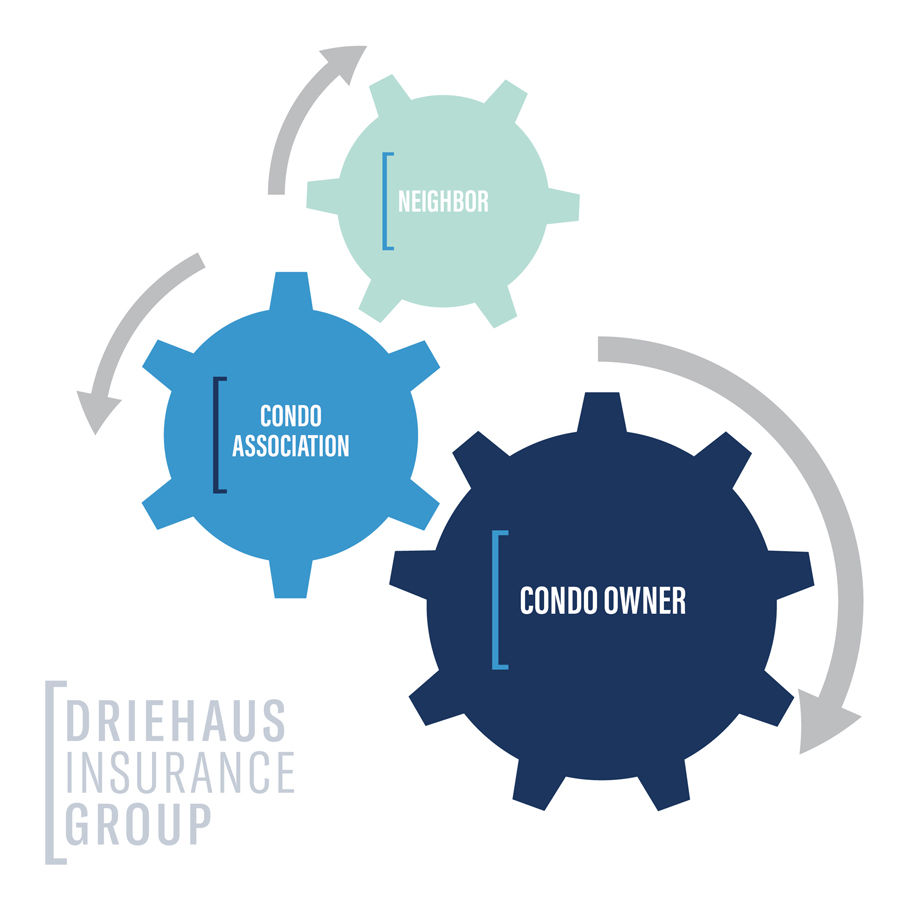Condo Unit Owners Best Practices / Part 1
- cbeckman98
- May 18, 2021
- 3 min read

Condominiums are a unique environment for insurance purposes. While you may own your unit and have your own insurance policy, you are going to interact with the insurance program carried by the association, and you may interact with your neighbor’s insurance program. This means that keeping the gears meshed together is important to all parties.
Condo Owner
As the owner of a condominium unit, you should carry your own insurance program for property and liability insurance. There is a specific insurance product for this need, The HO-6 Unit Owners Form. This is an industry standard product, but each insurance carrier will make their own edits to the form. The insurance carriers will often offer a broadening endorsement to add coverages or remove exclusions. These changes are critical to your getting the coverage you need. This article will focus on the base form and its provisions.
Where does coverage apply? – The policy provides coverage at the “residence premises”. This is the unit you reside in an that is shown on the policy declarations page. Make sure the description, address, unit number and details are correct.
Property Coverages
Dwelling Coverage is the alteration, appliances, fixtures, and improvements that are part of the building within your unit. It can also be called Unit Owners coverage.
The first intersection with another party is the coverage provided by the condo association. The bylaws or deed for your unit will define the level of property insurance carried by the association.
“Studs out” coverage that requires the unit owner to insure all of the finishes and appliances.
“All in” coverage means the association covers the finishes and appliances that are “association standard” grade and quality. This is when your knowledge of upgrades and values related are important. If you have made upgrades to standard finishes such as upgraded cabinets, countertops, floor coverings or window treatments, you need to capture these values as part of the dwelling coverage or unit owners coverage for your unit.
Personal Property – This coverage is for the contents of your unit, furniture, decorations, entertainment systems, clothing and all things in cabinets, drawers, and closets that are not permanently attached to the unit. The value here is extremely variable and should be based on a home inventory for most accurate results. Coverage can be extended to guests and residence employees.
Personal property coverage is an area where sub limits are common. The insurance form may have lowered limits from $200 to $10,000 for a number of items such as jewelry, firearms, and collectibles. A careful review of the items that are subject to lower limits is a worthwhile undertaking. A significant coverage gap can be present if this is not considered.
Loss of use – Coverage is provided for temporary living expenses and any loss of rental income for the duration of repair or replacement of the premises. If civil authorities require you to vacate the premises due to a covered loss, you can have additional living expenses and fair rental value coverage for two weeks. Additional coverages may be included in a broadening endorsement.
Additional Coverages – The HO-6 form offers a number of additional coverages. Some are included in the limit of insurance and others are additional coverage. These coverages are often the subject of the broadening endorsements offered by the carriers.
Within this long list of additional coverages there are two that should be carefully reviewed. The loss assessment value should be compared to the deductible on the condo association policy to assess your potential liability. The ordinance and law exposure for older buildings is also a potential coverage gap.
Exclusions that Limit Coverage
Ordinance or law beyond the sublimit already reviewed
Earth movement or earthquake
Flood, back up of sewers and drains,
Water infiltration through the building floors, foundations, or walls
Power failure
Neglect
War
Nuclear hazard
Intentional loss
Governmental action
The water damage exclusions can be problematic for many unit owners with lower-level exposures. Flood and quake are location specific hazards that need to be addressed. Ordinance and law can be a concern if you are in an older building. New code upgrades to access, egress and structural issues could be significant. Different companies have broadening endorsements that change their list of exclusions.
The Driehaus Difference
A condominium owner insurance program is not a set it and forget it process. You need to understand the unique coverages, unique exposures, and the impact that different company forms will have on your program. One of the most important factors in determining the level of coverage required, is to provide a copy of the bylaws to your agent. The insurance experts at Driehaus Insurance can guide you through the process to make the best choices for the protection you need. Call us at 513-977-6860 or contact us on the internet at www.driehausins.com




Comments